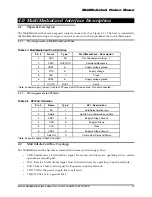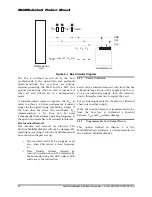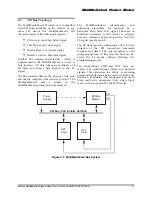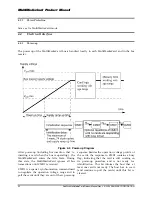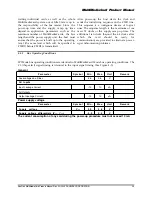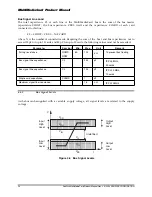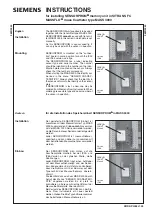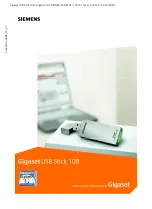
MultiMediaCard Product Manual
SanDisk MultiMediaCard Product Manual Rev. 2 © 2000 SANDISK CORPORATION
9
1.4
MultiMediaCard Standard
MultiMediaCards are fully compatible with the
MultiMediaCard standard specification listed
below:
The MultiMediaCard System Specification
Version 1.4
This specification may be obtained from:
MultiMediaCard Association
19672 Stevens Creek Blvd., Suite 404
Cupertino, CA 95014-2465
USA
Phone: 408-253-0441
Fax: 408-253-8811
Email: [email protected]
http://www.mmca.org
1.5
Functional Description
SanDisk MultiMediaCards contain a high level,
intelligent subsystem as shown in the block
diagram,
Figure 1-1. This
intelligent
(microprocessor)
subsystem
provides many
capabilities not found in other types of memory
cards. These capabilities include:
1. Host
independence
from details of erasing
and programming flash memory.
2. Sophisticated
system for managing
defects (analogous to systems found in
magnetic disk drives).
3. Sophisticated system for error recovery
including a powerful error correction code
(ECC).
4. Power management for low power
operation.
1.5.1
Flash Technology Independence
The 512 byte sector size of the MultiMediaCard is
the same as that in an IDE magnetic disk drive. To
write or read a sector (or multiple sectors), the
host computer software simply issues a Read or
Write command to the MultiMediaCard. This
command contains the address. The host software
then waits for the command to complete. The host
software does not get involved in the details of
how the flash memory is erased, programmed or
read. This is extremely important as flash devices
are expected to get more and more complex in the
future. Because the MultiMediaCard uses an
intelligent on-board controller, the host system
software will not require changing as new flash
memory evolves. In other words, systems t h a t
support the MultiMediaCard today will be able
to access future SanDisk MultiMediaCards built
with new flash technology without having to
update or change host software.
1.5.2
Defect and Error Management
MultiMediaCards contain a sophisticated defect
and error management system. This system is
analogous to the systems found in magnetic disk
drives and in many cases offers enhancements. For
instance, disk drives do not typically perform a
read after write to confirm the data is written
correctly because of the performance penalty t h a t
would be incurred. MultiMediaCards do a read
after write under margin conditions to verify t h a t
the data is written correctly. In the rare case t h a t
a bit is found to be defective, MultiMediaCards
replace this bad bit with a spare bit within the
sector header. If necessary, MultiMediaCards
will even replace the entire sector with a spare
sector. This is completely transparent to the host
and does not consume any user data space.
The MultiMediaCard’s soft
error
rate
specification is much better than the magnetic
disk drive specification. In the extremely rare
case a read error does occur, MultiMediaCards
have innovative algorithms to recover the data.
This is similar to using retries on a disk drive but
is much more sophisticated. The last line of
defense is to employ a powerful ECC to correct the
data. If ECC is used to recover data, defective bits
are replaced with spare bits to ensure they do not
cause any future problems.
These defect and error management systems
coupled with the solid-state construction give
MultiMediaCards unparalleled reliability.



















